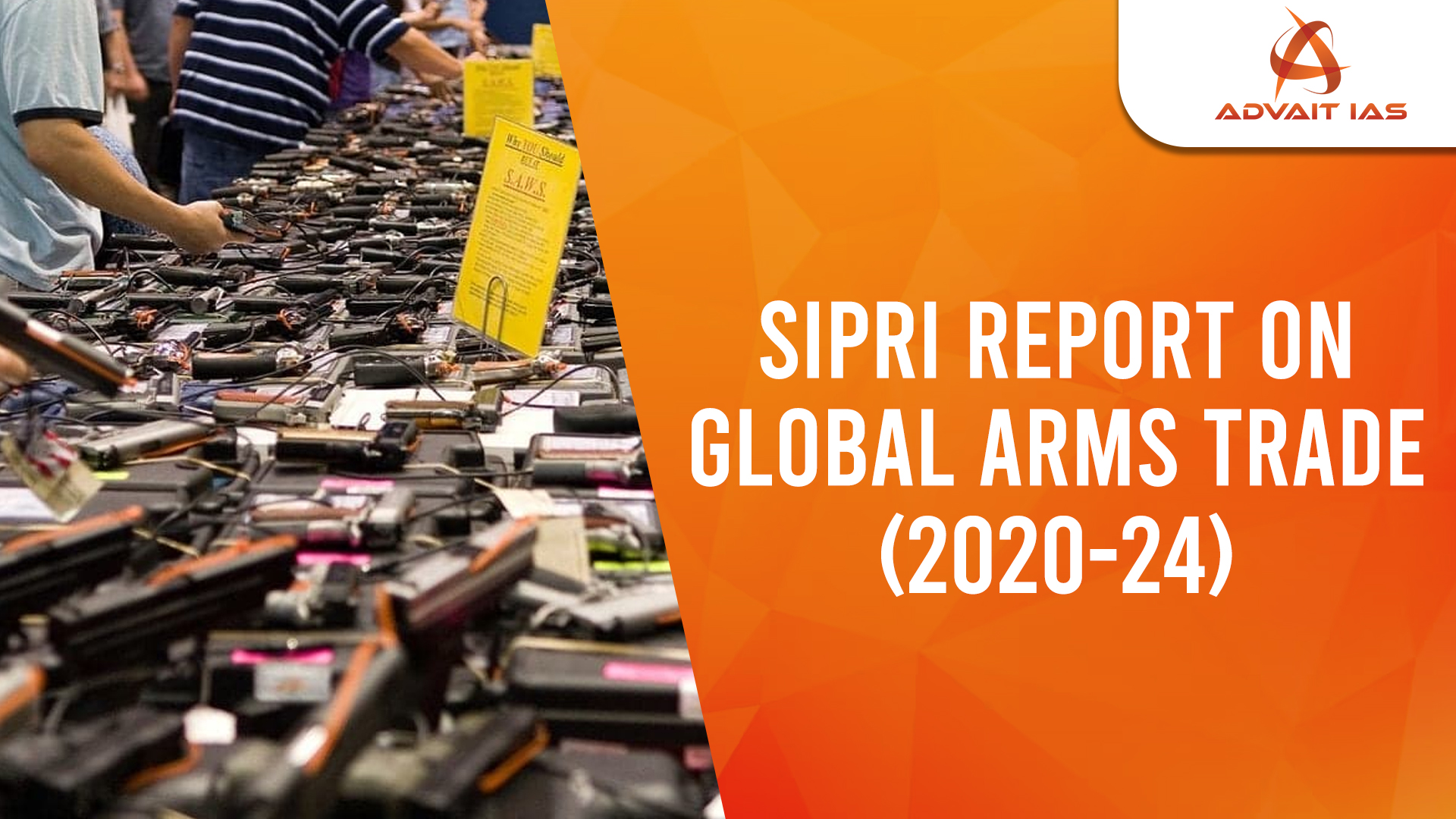India’s share of global arms imports fell to 8.3% (2020-24).
- India is the 2nd-largest arms importer after Ukraine.
- SIPRI (Stockholm International Peace Research Institute) report highlights global arms trade trends.
Key Findings of the Report
India’s Arms Trade Trends
- India’s arms imports declined by 9.3% (compared to 2015-19).
- Russia remains India’s top supplier, but its share fell from 72% (2010-14) to 36% (2020-24).
- France emerged as India’s second-largest supplier (28% of France’s exports went to India).
Arms Trade in India’s Neighborhood
- Pakistan’s arms imports increased by 61%.
- China supplied 81% of Pakistan’s arms.
- China dropped out of the top 10 arms importers for the first time since 1990-94.
- China’s imports declined by 64%, reflecting its stronger domestic defense industry.
Global Arms Trade Trends
- Asia & Oceania: India, Pakistan, Japan, and Australia were among the top 10 arms importers (2020-24).
- United States: Largest arms exporter.
- Supplied weapons to Ukraine, NATO allies, and Asia-Pacific nations.
- Europe:
- Arms imports surged by 155% (post-Russia’s invasion of Ukraine).
- France overtook Russia as the 2nd-largest arms exporter (India was the top buyer).
- Ukraine’s arms imports increased 100-fold, making it the world’s largest arms importer (8.8% of global imports).
- Russia:
- Arms exports fell by 64% (Western sanctions & production issues).
- India (38%), China (17%), Kazakhstan (11%) were Russia’s top buyers.
- Middle East:
- Arms imports declined by 20%, but Qatar became the 3rd-largest arms importer globally.
- Global Arms Transfers:
- Stable compared to 2015-19 and 2010-14.
- 18% higher than 2005-09, driven by rising imports in Europe & Americas.
India’s Initiatives to Reduce Arms Imports
Budget & Policy Measures
- ₹6.21 lakh crore allocated for defence (Budget 2024-25).
- 75% of capital procurement reserved for domestic manufacturers.
- SRIJAN Portal launched to promote Indian vendors in defence procurement.
Indigenization & Production Growth
- India’s defence production reached ₹1.27 lakh crore (2023-24) – 174% rise from 2014-15.
- Top destinations for India’s defence exports (2023-24):
- U.S., France, Armenia.
- Five Positive Indigenization Lists released to ban imports of selected defence items.
Strategic Reforms & Industrial Development
- Defence Acquisition Procedure (DAP) 2020:
- Prioritizes domestic procurement.
- Introduced “Buy (Indian-IDDM)” category for locally designed, developed, and manufactured products.
- Encourages private-sector participation through Make-I & Make-II projects.
- Defence Industrial Corridors (DICs):
- Established in Uttar Pradesh & Tamil Nadu to boost domestic manufacturing.
- Private Sector & FDI:
- 74% FDI under the Automatic Route.
- 100% FDI allowed under the Government Route.
- Private sector contributes 21% of India’s total defence production.
Key Public Sector & R&D Initiatives
- Defence Public Sector Units (DPSUs):
- 16 DPSUs, including HAL, BEL, Mazagon Dock Shipbuilders.
- Major projects:
- INS Vikrant (India’s first indigenous aircraft carrier).
- LCA Tejas (Advanced fighter jet developed by HAL).
- iDEX (Innovations for Defence Excellence):
- Promotes startups & MSMEs in military technology.
- Future Targets:
- ₹1.75 lakh crore defence production by 2025.
- ₹3 lakh crore defence production by 2029.
India is reducing arms imports through strong domestic initiatives. Growing self-reliance in defence aligns with Atmanirbhar Bharat vision. Strategic partnerships with France, U.S., and domestic industry growth will enhance India’s global defence standing.






